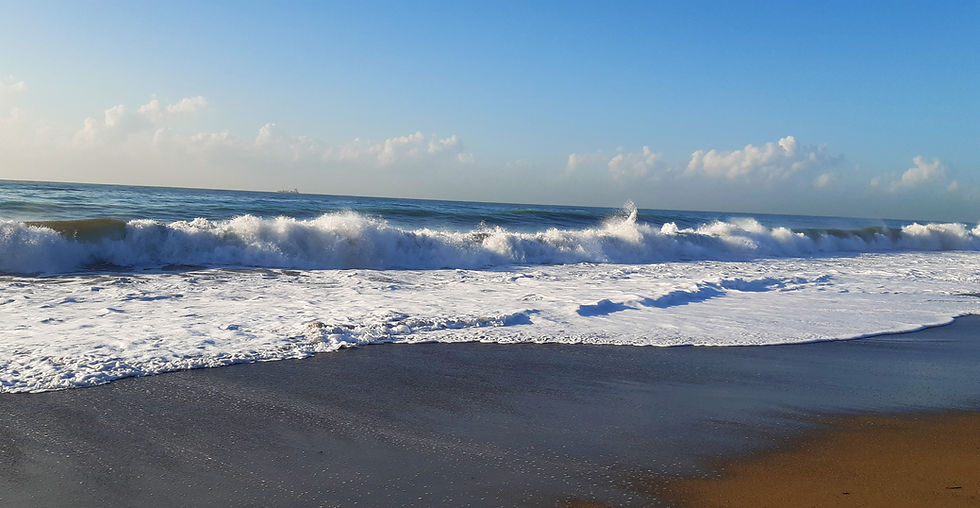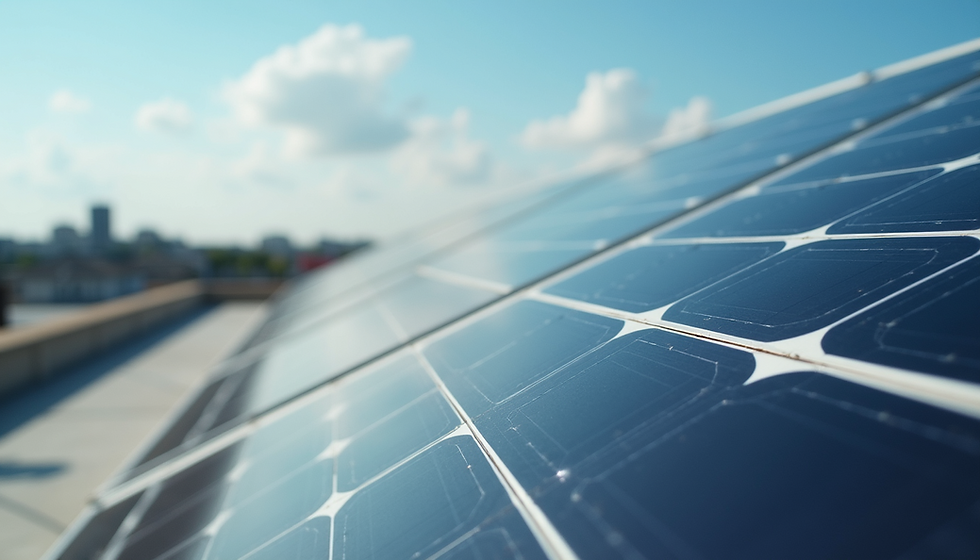Wave and Tidal Energy: Unlocking the Ocean’s Untapped Potential
- Sankalp Agrawal

- Oct 2
- 3 min read
When we talk about renewable energy, solar panels and wind farms usually take center stage. Yet, one of the most powerful and consistent sources of clean energy has been surrounding us all along: the ocean. Wave and tidal energy are emerging as serious contenders in the sustainable energy mix — promising to deliver stable, predictable, and large-scale clean power.
Unlike solar and wind, which depend on weather and daylight, ocean energy benefits from natural cycles of tides and waves driven by the gravitational pull of the moon and wind patterns. This reliability makes it a strong candidate for complementing intermittent renewables.

🌊 The Science Behind Ocean Energy
Tidal Energy:Tidal power harnesses the movement of water caused by the rise and fall of tides. It’s highly predictable — scientists can forecast tides centuries in advance, making tidal energy one of the most reliable renewable sources. Common methods include tidal barrages, tidal stream turbines, and dynamic tidal power systems.
Wave Energy:Waves are created by wind interacting with the surface of the ocean. By placing devices that capture the up-and-down motion of waves, we can generate electricity. Technologies range from floating buoys and oscillating water columns to submerged pressure systems.
⚡ Advantages of Wave and Tidal Energy

Predictability & Consistency – Unlike solar or wind, tides are predictable and waves follow seasonal patterns.
High Energy Density – Water is 800 times denser than air, which means more power can be generated with smaller equipment.
Long-Term Potential – The global theoretical potential of ocean energy is estimated to be more than 29,500 TWh per year – enough to cover global electricity demand.
Reduced Land Use – Ocean energy devices don’t compete for land, which is critical in urbanized or agricultural regions.
🚧 Challenges Holding It Back
High Costs: Prototypes and pilot projects are expensive compared to solar and wind.
Engineering Complexity: Designing machines that survive in rough marine environments is a huge challenge.
Environmental Concerns: Tidal barrages may affect local ecosystems and marine life if not designed carefully.
Scaling Issues: While small-scale projects exist, scaling to gigawatt-level capacity is still in progress.
🌍 Global Progress
Scotland 🇬🇧: A world leader in tidal energy, with projects like MeyGen, one of the largest tidal stream arrays.
Portugal 🇵🇹: Home to pioneering wave energy farms, testing floating devices off its Atlantic coast.
South Korea 🇰🇷: Operates the largest tidal power station in the world at Sihwa Lake.
India & Europe: Growing interest in coastal installations, particularly where high tidal ranges exist.

🔮 What the Future Holds
As technology matures, costs are expected to fall — just like solar and wind experienced in the past two decades. Hybrid systems combining offshore wind + wave power are already being tested, maximizing output from a single site.
In the coming decades, wave and tidal energy could transition from experimental projects to mainstream contributors, especially in coastal nations where demand for clean, reliable electricity is surging.
🌱 Final Thoughts
The ocean is vast, powerful, and consistent — qualities that make it a perfect ally in the fight against climate change. While challenges remain, every successful pilot project brings us closer to a future where wave and tidal energy become a cornerstone of the global energy mix.
At NRGIZED, we believe innovation lies in looking beyond the obvious. Sometimes, the answers to tomorrow’s challenges have been around us all along — we just need the right tools to harness them.






Comments